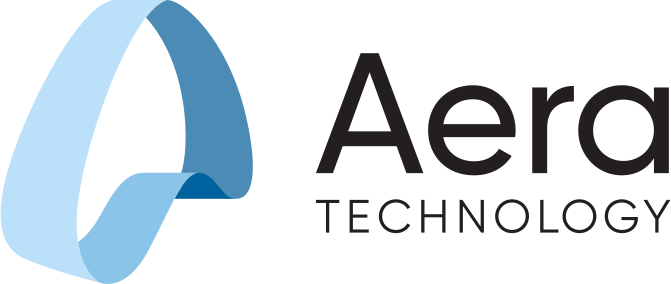Webinar Recap: From Blind Spots to Visibility — How Alcon is Transforming its Supply Chain with AI

Summary
In our Future.Now webinar, “From Blind Spots to Visibility: How Alcon is Transforming its Supply Chain with AI,” we explored how Alcon embedded the Aera decision intelligence agent directly into day-to-day operations to move from manual firefighting to proactive, system-driven decisions. Speakers walked through how the agent ingests live signals across supply, demand, and inventory; reasons over enterprise rules and constraints; and then issues explainable recommendations — so planners can act quickly on the best available option rather than assemble data from disparate systems. The session detailed how this approach improves delivery accuracy, shortens response times, and lowers the need for rush shipments by addressing issues before they impact customers.
We also examined the operating model that made this possible: aligning to a single decision data model; codifying policies and service priorities as guardrails; and sequencing rollout by high-impact use cases (such as system-driven sourcing, distribution rebalancing, and exception triage). With EY supporting enablement and scale, Alcon emphasized measurable outcomes — higher on-time performance, fewer manual touches per decision, and faster cycle times — while maintaining auditability and compliance. Together, these elements showed how visibility becomes action, how actions are governed, and how governed action drives resilience.
Key Takeaways
- Decision intelligence turns visibility into action.
Many programs stall at dashboards and reports; Alcon went further by embedding agents directly in operational flows. With Aera connected to enterprise logic and policies, recommendations fire in real time, accounting for constraints such as capacity, sourcing rules, and service priorities — so teams act faster and with greater consistency. Each recommendation includes a short rationale and feasibility check, making it easy to review and execute. -
Service performance improves when decisions are proactive.
The webinar highlighted measurable gains in delivery accuracy and responsiveness. Agents detect risks earlier (for example, a supply slip or an allocation squeeze), simulate feasible options, and trigger the best next action. That proactive stance reduces expedites, shortens recovery time, and sustains customer commitments — especially during promotions, supplier delays, or regional disruptions. -
A unified data model accelerates end-to-end decisions.
Fragmented data makes cross-functional decisions slow and error-prone. By aligning to a single decision data model and streaming signals continuously, Alcon created a shared picture of supply, demand, inventory, and constraints. This foundation enables shorter decision cycles and more reliable outcomes at scale, because planners, agents, and partners are working from the same fresh, trusted data. -
Planners focus on higher-value work when routine tasks are automated.
Agents handle repetitive checks and recommendations (e.g., distribution rebalancing, system-driven sourcing), freeing planners for exceptions, supplier collaboration, and scenario analysis. The shift reduces manual effort while improving both speed and quality of decisions; teams spend less time reconciling spreadsheets and more time shaping outcomes. -
Guardrails, transparency, and auditability build trust.
Autonomy doesn’t mean “black box.” Policies, thresholds, and approval flows ensure agents act within defined boundaries. Every recommendation is explainable and traceable — with data lineage, applied rules, and decision history — so business users stay confident and governance standards are met as automation scales. -
Change management matters as much as the tech.
Alcon sequenced rollout by high-impact use cases, invested in stakeholder onboarding, and aligned metrics to service and resilience goals. With EY assisting on methods and acceleration, the team used playbooks, training, and phased deployment to scale across regions and functions — preserving control while expanding scope.
Speakers
 |
Maria Luceron, Client Partner, Aera Technology Maria Luceron has over two decades of international enterprise software experience across consumer goods, industrial equipment, and life sciences. She leads digital transformation initiatives and builds trusted partnerships with global organizations. |
 |
Johanna Fuchs, Senior Global Product Manager, Alcon Johanna is a seasoned digital supply chain and operations leader with more than 14 years of experience in the medical devices and pharmaceutical industries. At Alcon, she led global digital initiatives to improve customer experience, operational results, and technology adoption, including the deployment of an enterprise-wide decision intelligence platform. Earlier, she oversaw SAP ERP rollouts across 23 EMEA markets, designing end-to-end supply chain and quality processes and managing cross-functional teams of 50+ people. |
 |
Jan Kovarik, Head Digital Transformation, Bavarian Nordic Jan is a digital supply chain and operations executive with 16+ years of experience across medical devices, pharma, consumer electronics, and automotive. He leads company-wide transformation at Bavarian Nordic through standardized processes and enabling technology. Previously at Alcon, he drove global digital initiatives that improved customer experience, operational performance, and technology adoption through major programs and large-scale business transformations. |
 |
Stefano Colombo, Director, Supply Chain & Operations, EY Stefano brings 16 years of experience transforming and digitizing global supply chains across pharma, med-tech, consumer, and industrial products. He leads multiple programs focused on modernizing operating models to accelerate value realization and build new capabilities. Stefano also champions key EY alliances and partnerships, including Aera for decision intelligence and Procter & Gamble for supply chain and operational excellence. |
Full Recording
Q&A
Q: Harmonizing data from multiple systems is always a challenge. You seem to have done it well. What approach did you take to make it work?
A: Jan Kovarik: It’s a very difficult undertaking. At Alcon we enforced, in a very strict fashion, what “good” looks like, the standards we wanted to see. We started at the top level with global attributes (if you want the technical jargon), then defined regional and site-specific standards, and so on. The first word that came to mind was policing. It wasn’t a pretty process — but it was extremely powerful by the end of the journey. When we deployed the ERP system, it worked on day one, followed global standards, and gave us value we could build on. As Johanna and Stefano pointed out, that foundation made implementing the decision intelligence layer — which sits on top of various systems, ERP being one of the most important ones and all fed by the data — much faster. The value generation was bigger and easier for the organization.
Q: Outcomes showed impressive results. How did you figure out where to start? What measures or process did you use, and did it work the first time?
A: Johanna Fuchs: We started with the most pressing issues — anything costing money, time, or customer satisfaction. We interviewed customers and internal stakeholders to find pain points and set priorities. Sometimes “who shouts the loudest” is real — while I don’t love the phrase — because when you hear the same pain across customers, you put it at the top of the list. Did it work perfectly on the first try? Definitely not. You have to start with a defined scope agreed with stakeholders, then run a continuous improvement cycle. You gain more insights, technology advances, market dynamics change, and you develop the product accordingly. With one of the first pilots, we learned a lot about what to do and what not to do, and we took those learnings into the next pilot and the next POC.
Q: What type of skills are needed to help build this decision intelligence platform, and did you have to hire new people or develop internal employees?
A: Johanna Fuchs: Upskilling is a big topic — don’t underestimate it. Technology is evolving very fast, and keeping up is a challenge across the enterprise, not only in supply chain. We focused on becoming more data-native, really understanding the data and the insights from decision intelligence tools to facilitate decision-making. Today you have to make decisions faster, using the insights provided.
Jan Kovarik: Back then we didn’t have a ready network of digital experts waiting for use cases. You start somewhere anyway. Leverage the industry network to help upskill people. Select the right people with the right mindset, willing to take a well-measurable risk and learn through those first POCs and MVPs (minimum viable products). The most valuable profile is someone who understands the business problem deeply. I can do digitization and deploy systems — that’s fine — but I don’t automatically understand the day-to-day business problems. Bring those people in, sometimes the difficult experts who say “I hate this job, I hate this part of the process.” Let them be creative, describe the problems, then digitize. Give them the first version of the digital product, let them run with it, and let them tell you what they think. That’s my five cents — and I’m 100% aligned with Johanna.
Stefano Colombo: I’ll add a change-management and adoption lens. The business has to buy in, or you end up with black boxes. We see planners say, “I don’t trust these recommendations,” because they don’t know how they were calculated or which logic was used. Explainability is key — make the logic clear so supply chain folks, planners, and logistics operations can cope with and benefit from the technology. Roles are changing (for example a decline in demand planner openings as responsibilities shift and other roles emerge). You need upskilling, but you also need to bridge technology and user expectations. Technology must help the business, not become a black box nobody knows and nobody trusts.
Q: Two parts for the Alcon team. Which ERP system do you have? And several modern ERPs (such as SAP and OTM) are also claiming decision intelligence capabilities. Did you evaluate those, and how did you create a value proposition for Aera?
A: Johanna Fuchs: We use SAP ERP at Alcon. Our decision intelligence journey started three to four years ago. The market has changed a lot since then. SAP and other players are coming up with their DI solutions, but three years ago it was maybe not entirely the case — they were not as far as Aera at that time. We wanted to start, so we launched one POC, capable-to-promise integrated directly into our e-commerce platform to give customers visibility as they place orders. When inventory wasn’t close to their distribution center, they could see when to expect the product. This was a high-value business case because missing an IOL can cancel a surgery — a direct patient impact — so it was critical. Other providers now have solutions, but originally, when we kicked off, we went with Aera.
On the value proposition, understand the business value DI can bring. That’s why Alcon started with a customer-facing case that affects how we operate with customers, because it directly impacts revenue and other aspects. For buy-in, that opens doors. Also track adoption, not just how many recommendations the tool provides, but whether people are actually utilizing them.
Jan Kovarik: I agree. From a transferability perspective, those statements are universally valid — define and quantify the business problem first, then select the tool, not the other way around. The customer perspective is important. E-commerce functions like backorder visibility and supply visibility were a game changer for us. In highly regulated industries, that kind of medicine-grade experience isn’t widely available yet. As an industry, we need to get there to better serve patients and healthcare professionals.
Q: You touched this during your presentation, Stefano, but could you re-emphasize: how quickly do you see results, and what does the implementation timeline typically look like?
A: Stefano Colombo: It depends on the case. We start with an immersive art-of-the-possible session, leading practices, what other companies are doing, and typical use cases to consider. Then we look at value and complexity for each use case. The methodology is standard, we go case by case, use case by use case, with quarterly deployments. We start with an MVP and aim to generate about 80% of the value in the first run, typically 12–16 weeks, depending on complexity and scope. You need to make choices, geographic subset, which data variables to include, and how much human interaction is required. Then we run two or three sprints to fine-tune the initial case. That timing is for one skill, you can roll out multiple skills in parallel. We often help clients set up a COE, speed depends on that governance.
In most cases, you see initial benefits within a quarter or two. We also have a roughly six-week test drive using your own data — it makes gaps visible early (data is always a problem, dirty or missing) and lets you calculate value with your data. I can’t say “3 or 6 or 10 weeks” as a rule, but a lot can happen in one or two quarters.
Jan Kovarik: From someone who started with no digital organization and had to convince multiple stakeholders, very senior and frontline, the key is to deliver something very fast. We didn’t have alignment across the organization, we went ahead and did it. We brought a fully digitized process — it wasn’t beautiful — but people said “wow.” No more sending out furnished spreadsheets across the organization. It all sits in one system, even in an app that sales reps can use. You want that wow effect — especially when you’re starting.
Q: Last question for the Alcon team: what is the biggest mindset change your teams had to make for this transformation?
A: Johanna Fuchs: We moved away from pulling data and pulling reports, drowning in information, then making a gut-feel decision because of time pressure. The change was showing the organization the power of decision intelligence partnering with people — having the data in a more coherent, explainable way that provides insights to support decision-making, so decisions are based on data and insights, not just urgency. It’s also important to show business value quickly, select the most pressing needs, and involve users early so they feel part of the solution and take ownership. A very smart person once told me that if you need a 50-slide deck to explain your digital product, you’ve failed. The product should be explainable enough that you don’t need a user manual.






